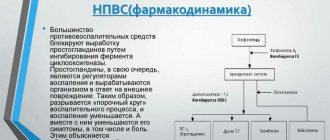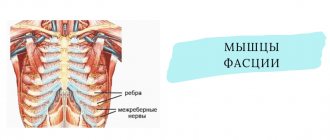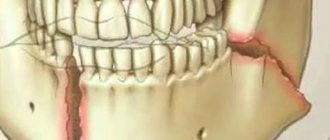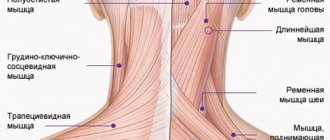How to treat intercostal neuralgia on the right or left?
Intercostal neuralgia is a reflex pain syndrome that occurs when the intercostal nerves are compressed, irritated or inflamed. Otherwise it is also called thoracalgia. This phenomenon is unpleasant, as it is accompanied by intense pain.
Clinical manifestations are very similar to the symptoms of a number of diseases of internal organs, in particular the heart. That is why many patients, frightened by an attack of intercostal neuralgia, turn to a cardiologist or begin to self-medicate by taking heart medications. The latter, along with the lack of correct diagnosis and adequate treatment, does not bring relief, but only aggravates the patient’s condition.
Since thoracalgia is quite common among older and older adults, being fully aware of it will ensure health and well-being during these stages of life.
Causes and risk factors
Intercostal neuralgia is not inherently an independent disease. From a medical point of view, this is a complication caused by the underlying disease or pathological process occurring in the body.
The human chest has twelve pairs of ribs, which are attached to the thoracic vertebrae of the spinal column at the back. The thoracic nerves, exiting through the intervertebral (foraminal) foramina and branching, are located between the ribs.
The mechanism of occurrence of intercostal neuralgia is simple. Seizures can be caused by:
- pinching or inflammation of nerve endings in the intercostal space;
- pinching of the roots of the thoracic spinal nerves at the point of their exit from the spinal canal.
The most common causes of neuralgia of the intercostal nerves are:
- osteochondrosis, spondylitis, ankylosing spondylitis and other diseases of the thoracic spine;
- excessive physical activity;
- tumors of the thoracic spinal cord;
- chest injury;
- sudden unsuccessful movement;
- general hypothermia of the body, hypothermia of the chest and back;
- pathologies of the upper gastrointestinal tract;
- forced awkward body position;
- herpetic infection.
The contributing factors are:
- age-related changes in blood vessels;
- metabolic disorders (diabetes mellitus);
- diseases of the nervous system;
- infectious and inflammatory diseases;
- immunodeficiency;
- intoxication of the body;
- uncomfortable workplace.
In women, intercostal neuralgia can be caused by wearing tight underwear, as well as being underweight. In children and adolescents, intercostal neuralgia can occur during a period of intensive growth of the bone skeleton.
Causes of neuralgia
The human nervous system is a “communication system” in the human body, designed to ensure the transmission of impulses from each organ to the brain and back. The main “transport channels” are nerve fibers; they extend from the spinal cord, to which they are attached with the help of roots and are directed to all organs along the intercostal spaces. The nerves themselves are heterogeneous - they are a bundle consisting of fibers that are divided into three types: sensory, motor and autonomic.
Editorial: Symptoms of meningitis in adults
In addition to nerve fibers, ligaments and muscles are located in the intercostal space, and the nerve roots come into contact with cartilage and bone. Since the fibers themselves are receptors, their slightest compression or pinching causes severe pain, which intensifies even more with the slightest movement of the body. In addition, changes can occur in the structure of the nerves themselves.
Among the reasons for changes, compression or infringement will be:
External factors
In the presence of hypothermia, muscle spasms may occur, which will irritate the nerve fibers. In case of too much physical activity, small microtraumas of muscle and nerve fibers occur, which in turn causes compression. Injuries cause swelling of the muscle mass, which causes a pain response in the nerve fibers.
Spinal disease
In diseases of the spine, which include all types of spinal curvature, intervertebral hernias, osteochondrosis, radiculitis, most often there is a shift of the vertebral discs, an unusual arrangement of the vertebrae, an increase in the volume of cartilage or, conversely, their abrasion (in osteoporosis). All this infringes on the nerve roots, leads to their tears, inflammation and causes neuralgia.
Among the causes of thoracic neuralgia, diseases associated with spinal problems account for 80%.
Infectious diseases
Infections can cause the disease. Here, an important role in the occurrence of symptoms is played by the penetration into the body of toxins secreted by viruses and bacteria, which will irritate the nerve endings, causing attacks of acute pain.
Poisoning
Poisoning with heavy metals, such as lead, toxins and a number of other substances affecting the nervous system, can cause intercostal neuralgia.
- These same reasons include alcoholism, which also results in general poisoning of the body.
- Long-term use of a large number of medications can also cause general poisoning of the body and, as a result, neuralgia.
Immune system dysfunction
In diseases associated with a malfunction of the immune system, intercostal neuralgia occurs due to damage to nerve fibers and the myelin sheath of the nerves.
- Diabetes mellitus causes changes in the functioning of blood vessels and the nervous system.
- Multiple sclerosis destroys the myelin sheath of nerves.
- Menopause in women disrupts the overall hormonal balance.
Nervous system disorders
Stress and other nervous overloads affect the functioning of the entire nervous system and can manifest themselves as pain in the form of intercostal neuralgia.
Symptoms of intercostal neuralgia
The main symptom of intercostal neuralgia is pain along the intercostal space. The intensity of pain can vary: from sharp, acute, severe, shooting (more often) to constant, medium intensity. The pain intensifies when the patient moves, when coughing and sneezing, and even when breathing. Often a person takes a forced position: leans towards the affected side in order to minimize the range of movements in it. Some patients, when coughing, laughing or sneezing, press their palm firmly against the affected intercostal space for the same purpose: to reduce the range of movements in this area so that it hurts less.
When the intercostal nerve on the left is damaged, the pain often imitates the sensations of angina pectoris: patients evaluate the pain as burning, with irradiation (spread) to the left arm, scapula, and spine. However, angina pain still does not depend on movements, coughing, laughter, etc., and, moreover, decreases after the patient takes nitroglycerin tablets or its analogues. However, in order not to miss such an important cardiac pathology, in doubtful cases the doctor prescribes an ECG for the patient. It is important not to confuse intercostal neuralgia with myocardial infarction, because the pain with it is also not reduced by nitroglycerin. Therefore, if pain suddenly arises in the heart area, you should not tempt fate, hoping for the best, but you need to play it safe: call an ambulance and undergo an electrocardiogram.
Differential diagnosis based on clinical manifestations is an important step in the treatment of patients. First of all, it is necessary to exclude heart pathology, since the treatment of intercostal neuralgia and heart diseases require different methods of therapy, and incorrect diagnosis and lost time in case of cardiac pathology can be decisive for the patient’s condition. The differences are primarily that:
- with neuralgia, chest pain persists for a long time, both day and night;
- the pain intensifies when changing the position of the body in space, coughing and sneezing, deep inhalation and exhalation, sudden movements, when palpating or squeezing the chest.
In case of heart disease, in particular angina pectoris, the resulting pain quickly passes after 5-10 minutes or is relieved by taking nitroglycerin. Movements and changes in body position, coughing and deep breathing do not cause increased heart pain, but may be accompanied by disturbances in heart rhythm and changes in blood pressure. To exclude the possibility of cardiac pathology in the presence of pain in the chest or under the left shoulder blade, it is necessary to urgently perform an electrocardiogram, and sometimes an x-ray.
Treatment methods
To treat intercostal neuralgia, pharmaceutical medications, traditional medicine, as well as physiotherapeutic methods for relieving the pathological condition of peripheral nerve endings are used.
Medications
Therapy of intercostal neuralgia with the help of medications is aimed at relieving spasms, eliminating acute or aching pain, as well as signs of a local inflammatory process.
The following medications are used for this:
- Diclofenac ointment - applied to the area of the body where the pain is localized, 3 to 4 times a day with an even distribution of the drug, relieves inflammation of the nerve endings and has an analgesic effect (duration of therapy is 14 days, and the price of the medication is 180 rubles per 40 g tube) ;
- Ibuprofen is an anesthetic and anti-inflammatory drug for oral use, prescribed 1-2 tablets once a day for no more than 3 days (the price of the drug is 48 rubles);
- Novocaine solution 0.5% concentration - administered in the form of intramuscular injections or by installing intravenous droppers, the dosage is determined individually by a neurologist or anesthesiologist depending on the body weight, age of the patient and the presence of concomitant diseases (the cost of the medication is 85 rubles);
- Diazepam - a drug intended to relieve spasms of muscle fibers and relieve compression of the roots of intercostal nerves, take 1 tablet 2-3 times a day for 10 days (average cost of the drug is 120 rubles).
All of the above medications should be prescribed exclusively by a neurologist. Self-treatment is contraindicated and can lead to deterioration of health.
Traditional methods
In addition to drug therapy, the following folk remedies are used to relieve spasms of intercostal neuralgia.
Dry heat
You need to take a clean, dry scarf or piece of fabric. Preheated table salt is poured onto it on top and then tied into a tight knot. The area of pain and muscle twitching is heated for 20 minutes. up to 3 times a day until the feeling of discomfort completely disappears.
Improved blood circulation
You will need to take 1 tsp. lamb fat and rub the area of the chest in which the pain is localized. Then you need to put on clothes and tie yourself with a woolen scarf or thick terry towel. The treatment procedure is performed 1-2 times a day for 7 days.
Hot bath
It is necessary to fill the bath with such an amount of water that the entire chest can be completely immersed in it. Then 1 kg of table salt is added to it and dissolved.
The water temperature should be no more than 45 degrees Celsius. After completing the preparatory steps, you need to immerse yourself in the bath and stay in it for 10-15 minutes. The warming effect improves blood circulation, relieves spasm and compression of nerve endings.
Iodine mesh
A grid-like pattern is applied to the surface of the ribs or the anterior wall of the chest using an iodine solution. The treatment procedure is performed once a day. The drug relieves inflammation and accelerates the process of normalizing the functioning of intercostal nerve endings.
Other methods
In combination with medications and folk recipes, physiotherapeutic methods for the treatment of intercostal neuralgia are used, namely:
- electrophoresis;
- massotherapy;
- manual therapy and restoration of the correct position of displaced discs;
- mud and mineral baths;
- spinal traction.
It is possible to relieve the symptoms of intercostal neuralgia with the help of tapes
The use of the above methods of therapy is advisable only in combination with treatment with medications. The duration and required number of procedures are determined individually based on the severity of the patient. On average, 5 to 10 sessions are enough.
Localization of pain
- Referred pain. Referred pain, as a rule, is a consequence of the development of a pathological process in the internal organs (diseases of the retroperitoneum, aortic aneurysm, pathology of the digestive tract, coronary artery disease).
- Radiating pain. The mechanism of development of this pain has not been fully studied to date. According to experts, parts of the nervous system may misinterpret the source of pain due to the presence of common pathways through which both visceral and somatic pain are carried out. Referring pain, resulting from stretching, irritation or compression of a somatic nerve or nerve root, is more intense. With physical activity, sneezing or coughing, the pain may intensify, and can often spread to the affected area of the body.
- Local pain. Its cause can be any pathological process aimed at pain receptors of various tissues, muscles, ligaments, skin, tendons, bones, joints, etc. In this case, pain develops directly in the area of damage.
Reasons for the development of neuralgia
The development of neuralgia in certain nerve fibers is due to their anatomical features. Thus, pathological lesions often develop in nerves that pass through narrow channels and openings.
Essential (primary) neuralgia develops for no apparent reason; clinical examination in this case does not reveal other diseases. It is believed that the cause of essential neuralgia may lie in the pressure that is exerted on the nerve fibers by the vascular arteriovenous connections.
Symptomatic (secondary) neuralgia is caused by systemic pathological processes, such as multiple sclerosis. In multiple sclerosis, the myelin sheath surrounding the nerve fiber is destroyed. The myelin sheath ensures the conduction of nerve impulses and protects the nerve fiber. Further destruction of the nerve fiber occurs. Neuralgia can also be caused by a growing tumor compressing the nerve fiber or a traumatic lesion.
Diagnostics
After the doctor has collected the patient’s complaints and history of the development of the disease, additional examinations must be carried out to confirm the diagnosis.
The most informative and used of them:
- Chest X-ray - reveals disturbances in the structure of bone tissue, as the main cause of the development of neuralgia;
- Bacteriological blood test - if the cause of thoracalgia is an infection, it reveals the causative agent of the disease, in other cases the analysis remains unchanged;
- Complete blood count - normal values are typical, or a slight increase in leukocytes in the case of an inflammatory reaction in the nerve area;
- Magnetic resonance imaging - determines bone and cartilage changes, swelling, pinching or inflammation of the intercostal nerve;
- Computed tomography is a more accurate method compared to x-rays; it reveals smaller abnormalities in the structure of bone tissue;
- Ultrasound – used to differentiate neuralgia from other pathologies, with thoracalgia it remains unchanged;
- Electrospondylography – determines the pathology of the intervertebral discs and spine;
- Myelography - the spinal cord and intercostal nerves are examined using a contrast agent on an X-ray machine, and allows you to identify changes in the nervous tissue;
- Electromyography - determines abnormalities in muscle fibers along the affected nerve.
Drug treatment
For neuralgic pain, drug treatment at home is the main thing. Typically, the following drugs are prescribed for neuralgia:
- Anti-inflammatory drugs: piroxicam, diclofenac, indomethacin, ibuprofen and voltaren. These medications are used externally in the form of ointments, and internally in the form of capsules, tablets and injections.
- Medicines that relieve the main symptom – pain: spasgan, sedalgin or analgin.
- Muscle relaxants sirdalud, baclofen, clonazepam (relieve one of the causes of neuralgia - muscle spasm).
- Medicines such as viperalgin, vipratox, apizartron and virapin, containing bee and snake venom, significantly alleviate the condition of patients.
- Anesthetics (lidocaine and novocaine), which are used to perform blockades in acute conditions, injecting them intramuscularly.
- B vitamins, the deficiency of which negatively affects the nervous system and provokes intercostal neuralgia.
- Sedatives are prescribed for insomnia caused by excruciating neuralgic pain.
Which doctor should I make an appointment with?
At the first symptoms and signs of intercostal neuralgia, for any type of pain on the right or left under the ribs, you need to go to your clinic and make an appointment with your local physician. The therapist will prescribe the necessary tests, such as an ECG and an x-ray of the thoracic spine.
After studying the studies and confirming the diagnosis of intercostal neuralgia, the patient is sent under the supervision of a neurologist, who, if necessary, will prescribe treatment from other specialists , such as:
- physiotherapist,
- masseur,
- chiropractor,
- exercise therapy specialist,
- as well as a reflexologist.
Tell everyone:
Non-drug therapy
Intercostal neuralgia can be treated without the use of medications using the following methods:
- Using massage movements of the hands with a warming ointment or cream applied to them, deep warming and relaxation of the muscles that create a protective “corset” (or, conversely, leading to compression of the intercostal nerve) is achieved. It is performed in a sitting position with rubbing and stroking the intercostal spaces with the fingertips and subsequent kneading of all the spinal muscles.
- Unlike the previous method, acupressure applies pressure to the physiologically and bioenergetically massaged chest points associated with the diseased organ, leading to pain relief, relaxation and a quick effect by stimulating the body’s own defense mechanisms.
- Similar physiologically and bioenergetically justified effects are the methods of acupuncture (acupuncture), cauterization, and laser therapy, which make it possible to quickly neutralize muscle imbalance in the deep back muscles with the elimination of pain.
- Treatment of intercostal neuralgia by placing massage cups on the back pursues the same goals, being a simple and harmless technique for the body (provided there are no contraindications to its use).
- Manual techniques are resorted to after the end of the acute period. They consist in returning to their proper places the bone structures and muscles and ligaments that serve them that have been displaced during the disease and are carried out exclusively after manual diagnosis. As a result of the impact, the diameter of the narrowed tunnels (bone-tendon and musculoskeletal) returns to normal and the function of the pinched nerve is restored.
Like all the above methods, physiotherapeutic methods using:
- magnetic or electromagnetic field;
- ultrasonic, ultraviolet and infrared radiation;
- electro- and iontophoresis, with a dose of the drug substance that is minimal for the risk of the fetus.
Treatment
What to do if you have pain in the chest area? First of all, you need to figure out whether this is really intercostal neuralgia or some more dangerous disease. Indeed, with intercostal neuralgia, the symptoms often copy the symptoms of diseases of the internal organs. And self-treatment, if the diagnosis was made incorrectly by the patient himself, can lead to dire consequences. In addition, neuralgia in different people may differ in its causes and intensity, and effective treatment may have its own characteristics each time. Therefore, if characteristic signs indicating intercostal neuralgia appear, you should consult a therapist. Only a doctor can correctly recognize the symptoms and prescribe treatment.
Editor's note: Causes of severe headaches
The treatment strategy consists of three stages:
- Relief of pain using painkillers
- Eliminating the immediate cause of pinched or damaged nerve
- Treatment of those pathologies that caused nerve irritation
Traditional medicine
In traditional medicine, the following methods of treating intercostal neuralgia are usually used:
- Medication therapy (analgesics, anti-inflammatory drugs, vitamins)
- Physiotherapy
- Limitation of spinal mobility (for example, with the help of corsets)
- Manual and reflex therapy
- Massage
- Physiotherapy
Treatment in most cases is conservative, although in case of advanced disease and ineffectiveness of other methods, surgical intervention can also be used. Treatment methods for right-sided and left-sided intercostal neuralgia are not fundamentally different. During exacerbation of the disease, bed rest is usually indicated, but the patient is recommended to lie on a hard surface.
Drugs
Relief of severe pain is usually done with injections of painkillers - novocaine blockades. If the pain is moderate, it is preferable to take oral analgesics. Also, for intercostal neuralgia, muscle relaxants are prescribed to help relax muscles, diuretics to relieve swelling, sedatives and antidepressants to relieve stress. Ointments or patches with anti-inflammatory and analgesic substances can be used locally. In case of intercostal neuralgia caused by herpes, drugs that fight viruses are prescribed.
Treatment methods for neuralgia caused by osteochondrosis
If the root cause of the disease is osteochondrosis, then the fight against neuralgia should be aimed primarily at its treatment. In this case, methods such as physiotherapy, massage and manual therapy provide great help.
Physiotherapeutic procedures are one of the most effective methods in treating the consequences of osteochondrosis. These may include the use of ultrasound, magnetic fields, electric current, laser, UV and IR radiation.
The massage is designed to strengthen and relax muscles, as well as improve blood flow in tissues. Manual therapy is aimed primarily at restoring the configuration of the spine and eliminating displacements of individual vertebrae.
Traditional methods
Neuralgia is by no means a modern phenomenon. Our great-grandfathers knew very well what kind of scourge this was, but they also knew how to treat it. Traditional medicine has developed many effective methods that can be successfully used today. After all, it is not always possible to see a doctor if an attack of illness occurs suddenly.
Rubbing the affected area with alcohol tincture of birch buds or valerian gives a good effect. General warming of the body with warm clothes or a woolen scarf also helps. Local heating of the painful area using heating pads is ineffective and can only worsen the condition.
Among the remedies for internal use, it is worth mentioning a decoction of peppermint. It is prepared like this: 1 tablespoon of dry leaves is infused in 200 g of boiling water. You should drink 100 g of the decoction in the morning and evening.
Treatment of intercostal neuralgia using traditional methods
There are many folk recipes that can be used to treat intercostal neuralgia at home. However, I would like to note that since the reasons causing it are quite serious, you should not self-medicate and check whether the disease can go away on its own. Secondly, it is necessary to accurately confirm the diagnosis, excluding pathologies of the cardiovascular system and other disorders. Otherwise, the underlying disease can be triggered.
- Sage baths with sea salt help relieve tension and reduce pain.
- Rubbing with tincture of valerian or infusion of birch buds is effective - their effect is in no way inferior to industrially produced ointments. However, it is better not to apply alcohol compresses at night - prolonged exposure to alcohol can lead to burns.
- Warming up also helps, but the thermal effect for intercostal neuralgia should not be direct, that is, do not apply a heating pad, hot potato or egg, but wrap yourself in a downy scarf or knitted woolen item. If you heat the painful area too much, the pain will go away for a short time and then such an effect will only increase the swelling of the soft tissues and bring even greater pain.
- For topical application to affected areas, use black radish juice or horseradish juice. Compresses based on steamed flax seeds help a lot.
To prevent chronic neuralgia, it is important to eliminate the effects of harmful concomitant factors, such as psycho-emotional stress, heavy physical activity, alcohol abuse, and also to treat existing diseases of the nervous system, systems and organs, etc.
Manual therapy
The use of manual therapy for intercostal neuralgia gives very good results. A targeted effect on the spine allows you to return displaced vertebrae to their place, pinched nerves are released, which leads to the normalization and restoration of the functioning of the spine as a whole, as well as eliminating the cause of intercostal neuralgia.
The only condition for the use of manual therapy is that the chiropractor must be a certified professional.
Self-medication with manual therapy at home, or seeking the services of unlicensed “doctors” is not acceptable!
Exercises
Physical therapy (physical therapy) is an effective way to treat neuralgia due to the anatomical structure of the human body. The nerves are located in the grooves of the ribs, which are covered by muscles. Spasmed muscles put pressure on nerve trunks, which causes pain. Exercises relax the muscles of the back and chest, improve blood circulation, and as a result the pain goes away. Gymnastics are prescribed only after acute pain has been relieved.
When performing physical exercises, you must consider some rules:
- Classes begin with a light warm-up - the body should be warmed up.
- The load must be increased gradually.
- You can't exercise through pain.
- Movements should be careful and smooth.
- Exercises should be aimed at strengthening the back muscles and stretching the spine.
- When performing exercises, you need to relax your back muscles as much as possible.
- You need to study every day, without skipping.
Gymnastics using the method of Dr. Bubnovsky is very effective. The essence of his technique: no medications, the medicine will be exercises, including those performed on special simulators. These exercises increase blood circulation and relax the deepest muscles.
Prevention
Specific prevention of neuralgia of the intercostal nerves has not been developed; general strengthening measures will help prevent the development of pathology. Recommended:
- avoiding hypothermia;
- hardening of the body;
- a healthy lifestyle, including regular moderate physical activity and a rational, balanced diet;
- measures to help prevent spinal curvature or treat an existing curvature;
- timely treatment of spinal diseases, chest injuries, pathologies of internal organs;
- work in comfortable conditions, with prolonged forced body positions, take breaks for a short warm-up.








